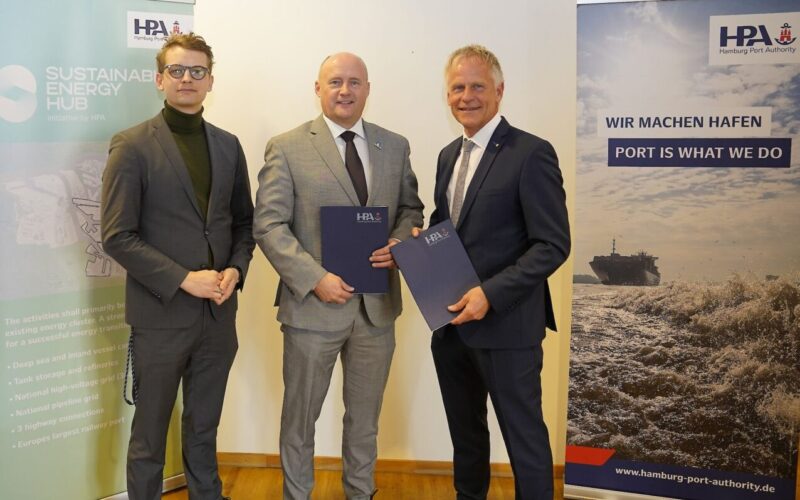The Canadian Port of Argentia and the Hamburg Port Authority (HPA) have signed a Letter of Intent (LOI) to collaborate on the export and import of green hydrogen from Canada to Germany.
Scott Penney, CEO of the Port of Argentia, and Jens Meier from HPA signed the agreement while attending the Canada-Germany Hydrogen and Ammonia Producer-Offtaker Conference in Hamburg.
This LOI supports the Governments of Canada and Germany’s mandate to establish an energy partnership and foster collaboration aimed at reducing emissions and transitioning to cleaner fuels and a greener economy while supporting the joint declaration of intent between Canada and Germany to establish a Canada-Germany Hydrogen Alliance.
Under the agreement, the signatories will support the initiatives in their respective port areas to establish a robust supply chain of green hydrogen derivatives between the two ports.
READ: Canada launches Green Shipping Corridor Program
The Port of Argentia is a partner with Pattern Energy for the establishment of Argentia Renewables, a 300-megawatt (MW) wind energy to green hydrogen production project at Argentia. This LOI will form the framework for collaboration to facilitate the production, distribution and application of green hydrogen.
“This signing strategically aligns both the Ports of Argentia and Hamburg to facilitate the development of a hydrogen export/import corridor as we collectively establish our ports as leaders in the global energy transition,” stated Scott Penney.
“This LOI confirms our commitment to the principals of the Alliance and in collaboration with Hamburg Port Authority, our ports will solidify our roles in providing energy transportation solutions.”
READ: Port of Hamburg ends 2023 at 8 million TEU
Jens Meier CEO of the HPA, added: “The Ports of Argentia and Hamburg concur that a maritime supply chain for green hydrogen and its derivates is urgently needed.
“Such novel supply chains need close cooperation and collaboration among exporting and importing ports. As future production and consumption locations, both ports have unique offerings to share in a manner that can be mutually beneficial.”








